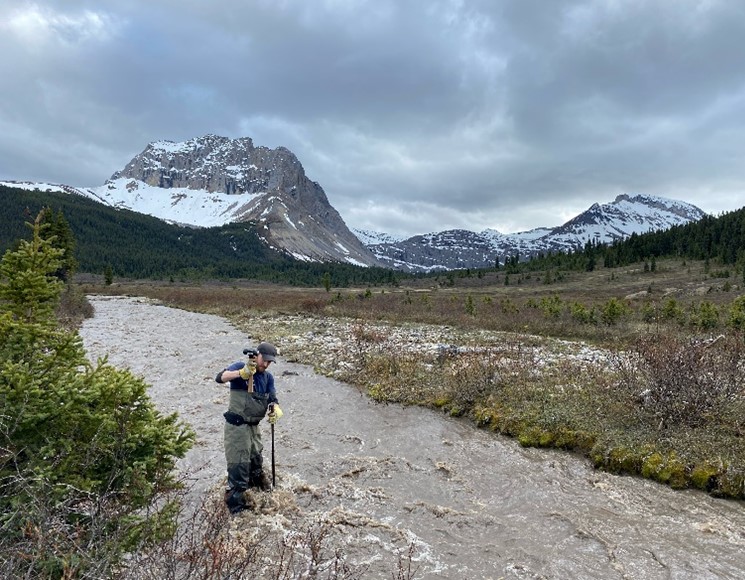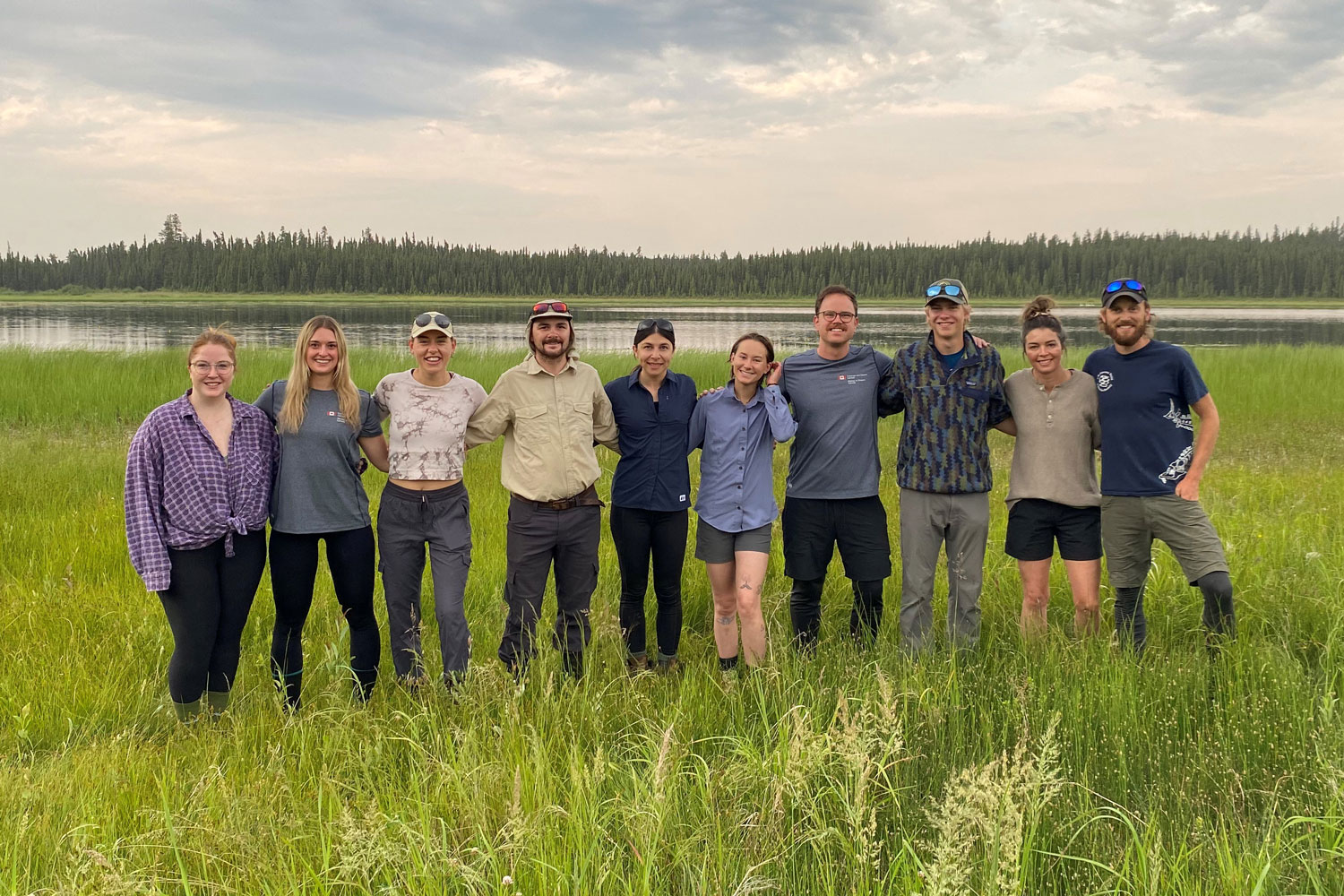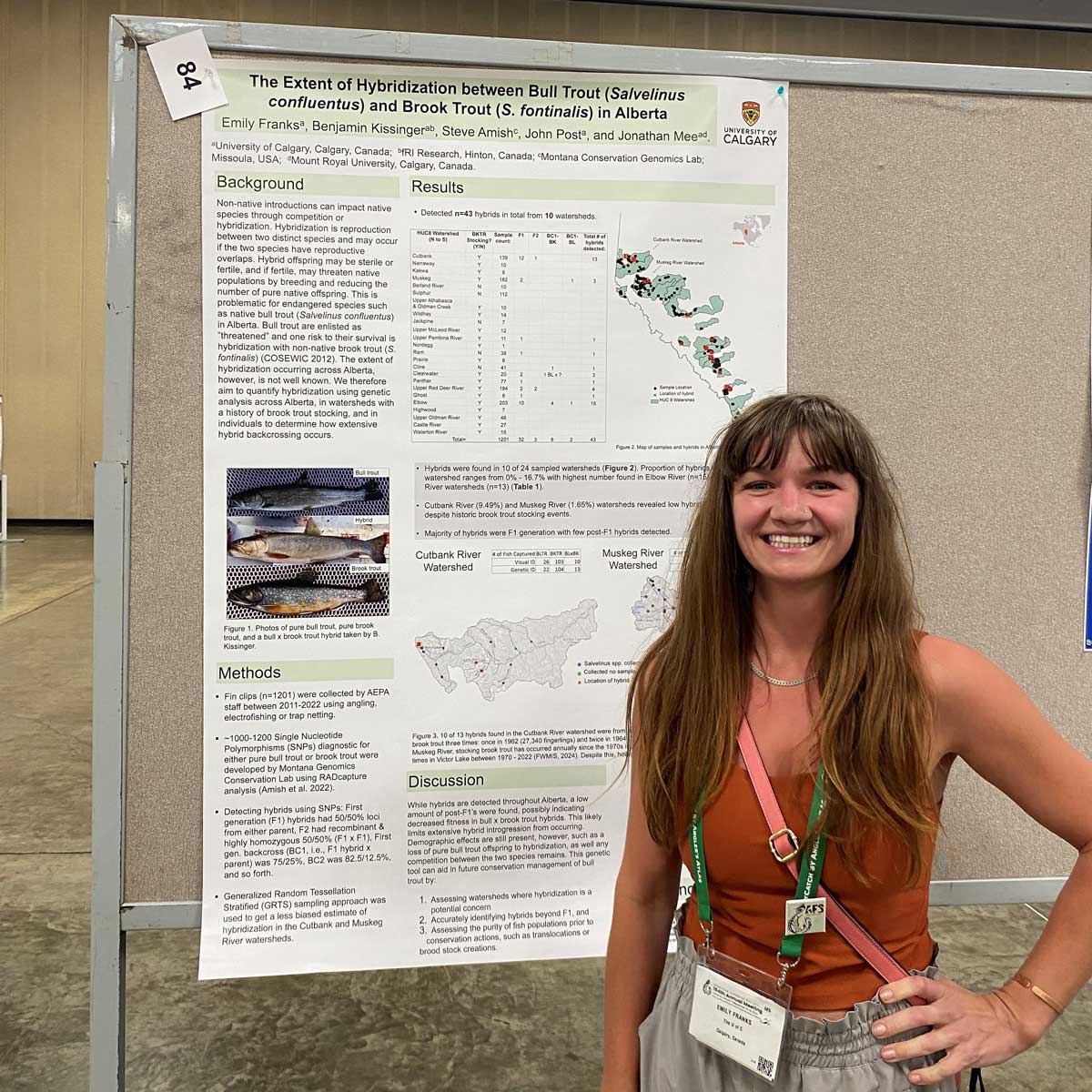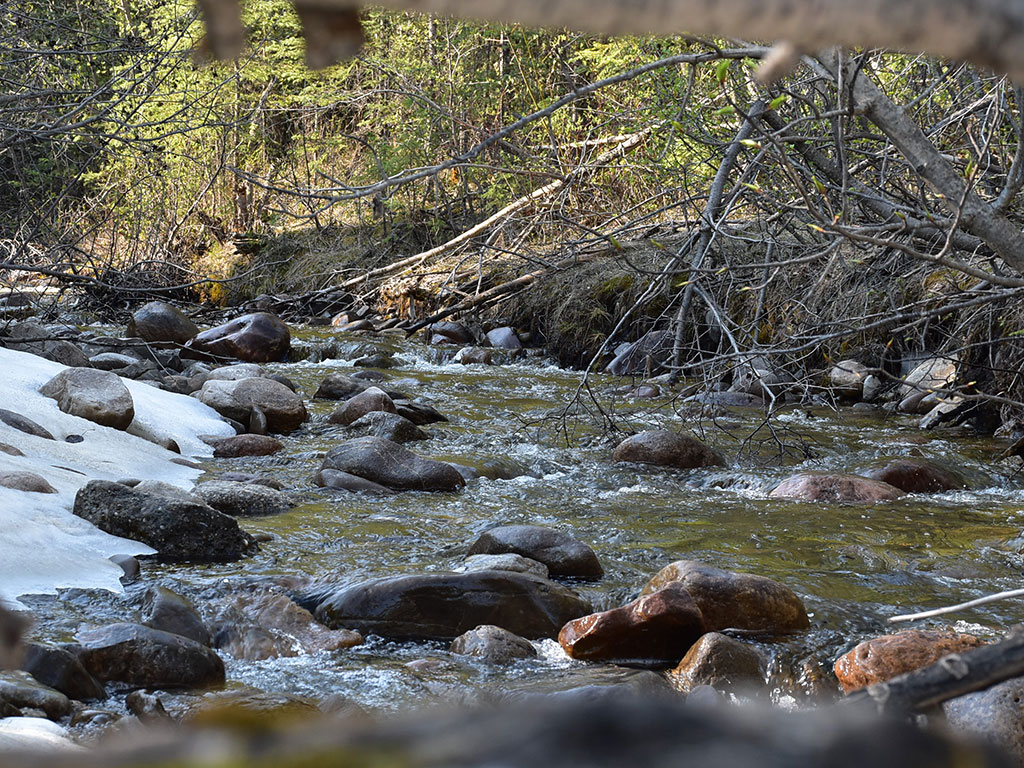
The Water and Fish Program presented at the 154th annual American Fisheries Society Symposium in Honolulu. The 2024 symposium theme was, “Conserving Fishes and Fishing traditions Through Knowledge Co-Production,” and it did a great job of showcasing the long relationship and knowledge that indigenous people of Hawai’i have had with the waters and fish surrounding Hawai’i. There was also a diversity of topics and themes with presenters attending from all over the world.
In total, more than 1,000 fisheries professionals and students attended. To showcase some of the great work out of fRI Research, the Water and Fish Program and Foothills Stream Crossing Partnership gave four presentations.

A Collaborative Approach to Modeling Stream Temperature along Alberta’s Eastern Slopes
Oral presentation by Benjamin Kissinger
Co-authors: Ryan MacDonald, Devin Cairns, Sam Chevalier, Lisa Schaubel, Neil Mochnacz
Water temperature plays a central role in shaping fish distributions especially for those species adapted to cold, low productive environments like salmonids. In Alberta, three salmonid species are federally listed as species at risk: Athabasca Rainbow Trout, Bull Trout, and Westslope Cutthroat Trout. The threat of warming waters through riparian vegetation loss, climate change, and water use influences the available habitat for these cold-water species. To better quantify the distribution of cold-water habitat for these species, we used spatial stream network models to predict stream temperatures across Alberta’s Eastern Slopes region. Temperature data have been collected through a collaborative effort to 1) collate existing data, 2) collect new data, and 3) model mean August temperatures. To date this collaborative approach has collated data from over 15 organizations representing indigenous, industry, NGO, and government organizations. A total of ~1,600 unique locations have been sampled with some datasets spanning 30 years. Data continue to arrive, improving and increasing spatial coverage and model fit. The outputs from this work will aid in selection of locations for species recovery efforts, identifying critical cold-water habitat, and better understanding watershed’s vulnerability to climate and landscape change.
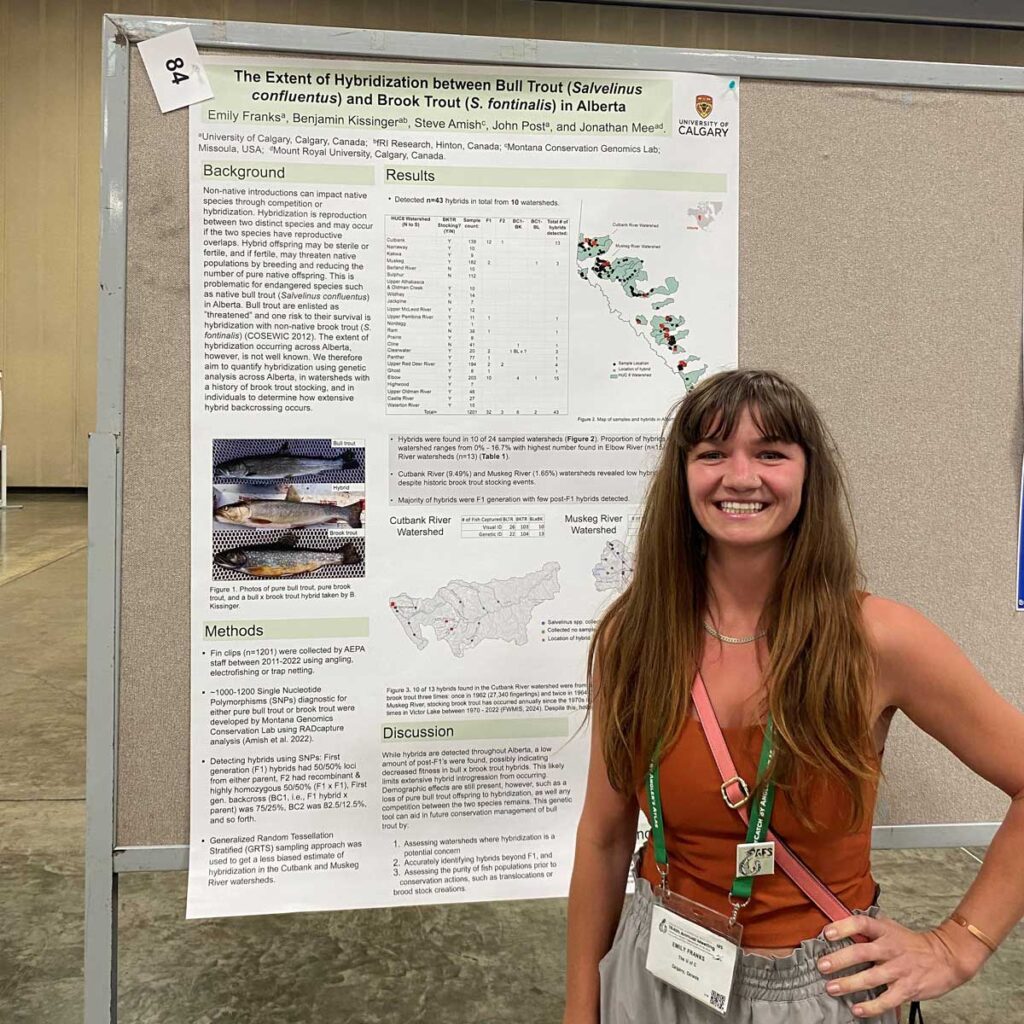
The Extent of Hybridization between Bull Trout and Brook Trout in Alberta
Poster by Emily Franks
Co-authors: Benjamin Kissinger, Steve Amish, John Post, Jon Mee
Investigating the extent of hybridization between two species provides insight into the evolutionary processes between sympatric species. While hybridization between native species can occur naturally, the movement of non-native species outside their natural distributions may result in hybridization between species that are otherwise historically isolated, which has the potential for negative effects. For example, hybridization with non-native species results in loss of recruitment for native species, and potentially loss of genetic integrity in introgressed populations, the extent of which varies among hybrid crosses. Bull trout, Salvelinus confluentus, are a native species to Alberta watersheds and are currently designated as “Threatened” under the Endangered Species Act. Bull trout populations are affected by the introduction of non-native brook trout, S. fontinalis, a species initially introduced into Alberta through recreational stocking. As brook trout occupy similar ecological niches as bull trout, competition between the two species has contributed to the bull trout’s overall decline. However, it remains unclear if bull trout experience declines due to extensive introgression from hybridization with brook trout. Therefore, we aim to quantify the extent of hybridization occurring between bull trout and brook trout across various Alberta populations using single nucleotide polymorphisms, where extent is defined as the proportion of hybrids found in populations where brook trout are highly persistent and the distribution of hybrids found across the landscape of Alberta. Our results found 42 bull x brook trout hybrids present across 10 HUC8 watersheds, indicating hybridization exists throughout the range of native bull trout in Alberta. However, hybrid proportions were not evenly distributed across the watersheds due to sampling sizes. Of the hybrids detected, 32 were first-generation (F1) and only 10 were from post-F1 generations. This low amount of post-F1 hybridization present in our samples indicates introgression from brook trout is a low threat for native bull trout. These findings contribute to protecting bull trout populations in Alberta by revealing the extent of which hybridization impacts native bull trout, thereby aiding in the conservation and management of native trout.

Temporal Shifts in Occupancy Probability of Mountain Fishes
Oral presentation by Angus Lothian
Co-authors: Benjamin Kissinger, John Post
Global biodiversity is under major threat from multiple stressors. In Alberta, Canada, four native fish are listed under the federal Species at Risk Act and 12 listed provincially. Many of these species exist in the Eastern Slopes (ES) region of Alberta, the transition between mountain and prairie. Using multi-species occupancy models, we investigate the temporal trends in species richness, species turnover and occupancy probability across the ES over a 25-year period (1996-2020). Using backpack electrofishing data, 6563 surveys were binned into 5-year periods (1996-2000, 2001-2005, etc.) and constrained within 391 unique HUC10s across the ES. Forty-eight species were identified within the ES between 1996 and 2020, with estimated species richness at a HUC10 scale remaining stable throughout that study period. Jaccard’s similarity index suggested that the greatest species turnover happened between time periods 3 and 4 (J = 0.74), with the overall similarity between periods 1 and 5 being 0.88 (a change of five species). Between periods 1 and 5, 20 species were deemed to have stable occupancy probability at a HUC10 scale, with six species increasing in occupancy probability and ten decreasing. Those that increased in occupancy probability were warm-water fishes or those that are stocked for recreation. Cold-water fishes were predominantly identified as declining, with Arctic grayling, longnose sucker and mountain whitefish showing the largest declines in HUC10 occupancy probability (–0.29 (S.D. = 0.05), -0.21 (S.D. = 0.06) and -0.16 (S.D. = 0.07), respectively). These results indicate that non-target species are declining more rapidly than those currently listed as at risk, suggesting a more holistic approach could benefit fish conservation in sensitive waters of Alberta.
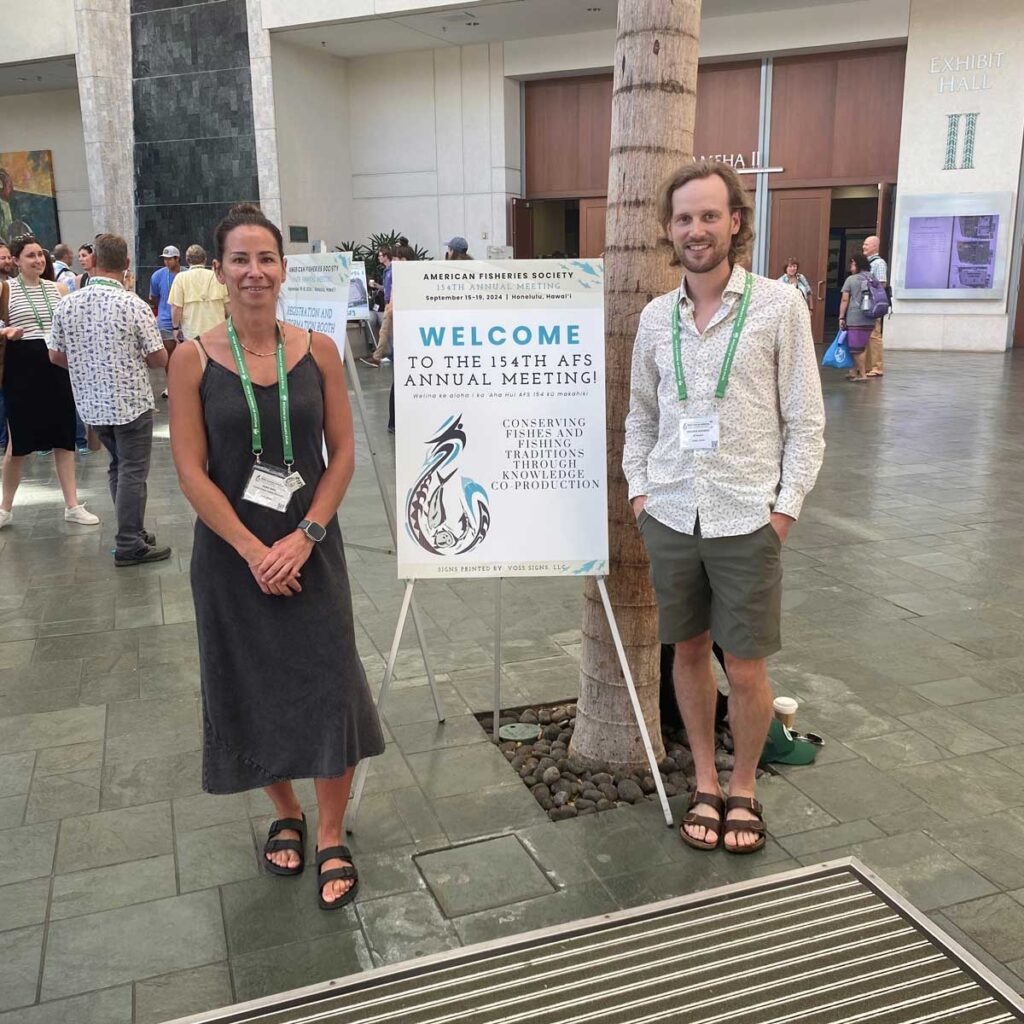
Mitigating Stream Crossing Fragmentation: Alberta’s Foothills Partnership Success
Oral presentation by Ngaio Baril
Stream crossing ownership in Alberta, Canada is a complex and interwoven mix of stakeholders over a vast landscape. Watersheds in the headwaters of the Rockies have many crossings owned by forestry, energy, mining, government, rail transport and private ownership regulated by multijurisdictional governments. These factors have led to significant fragmentation of our headwater streams, habitat to endangered and listed fish species. Crossings can become barriers to fish migration, disconnecting passage to valuable headwater habitat. In Alberta, Canada there are 10,000s of crossings, with estimates predicting 40% of culverts as barriers. Increasing drought, extreme flooding, and warming waters have intensified pressures on declining fish species dependent on the cool streams of the Rocky Mountains. The scale and urgency of the situation was recognized by a handful of forestry and energy companies operating in the headwaters 15 years ago. At that time, there was minimal regulatory oversite, so they decided to coordinate efforts to inventory, monitor and repair stream crossings as a multi stakeholder industry group, forming the Foothills Stream Crossing Partnership (FSCP). The FSCP consists of 27 industry partners that coordinate efforts to inventory, monitor and repair stream crossings. They’ve developed methodology to maximize the environmental value of each remediation effort and provide the structure and tools for companies to coordinate repairing fish barriers in sequential order to reconnect the maximum amount of habitat. This methodology has resulted in an online database of over 33,000 inspections of 13,500 crossings. At the FSCP’s 17-year anniversary they are celebrating over 4,700kms of reconnected fish habitat due to mitigation at 750 stream crossings acting as barriers. These barriers were removed from habitat for listed species including Cutthroat trout, Bull trout, Athabasca Rainbow trout and Arctic grayling. In the next four years, 280 barriers are planned for reclamation, opening over 680km’s of additional fish habitat!







